How to Decrease Ad Spend Without Decreasing Results
by Aden Andrus • March 28, 2019
Paid search ads are a great way to bring in new clients and customers, but there’s one downside: actually paying for all of those clicks. If only there was a way to spend less on ads without simultaneously cutting back on performance…
Well, you’re in luck. There are actually several ways to reduce ad spend without significantly affecting your results.
Of course, none of the tactics we’re going to discuss in this article are a guaranteed win, but if you use them correctly (especially together), you can usually save yourself a good bit of money while maintaining campaign performance.
Sound like a plan? Let’s dive in!
Improve Keywords
Paid search is all about getting your ads in front of people who are actively searching for what you have to sell. It’s a great model that works really well—provided that your ads are actually showing up in front of the right audience.
Sadly, most paid search marketers make the mistake of assuming that their ads are displaying to a relevant audience that wants to convert.
The problem is, that’s rarely the case.
To show you what I mean, open your AdWords account and take a look at your Search Terms report.
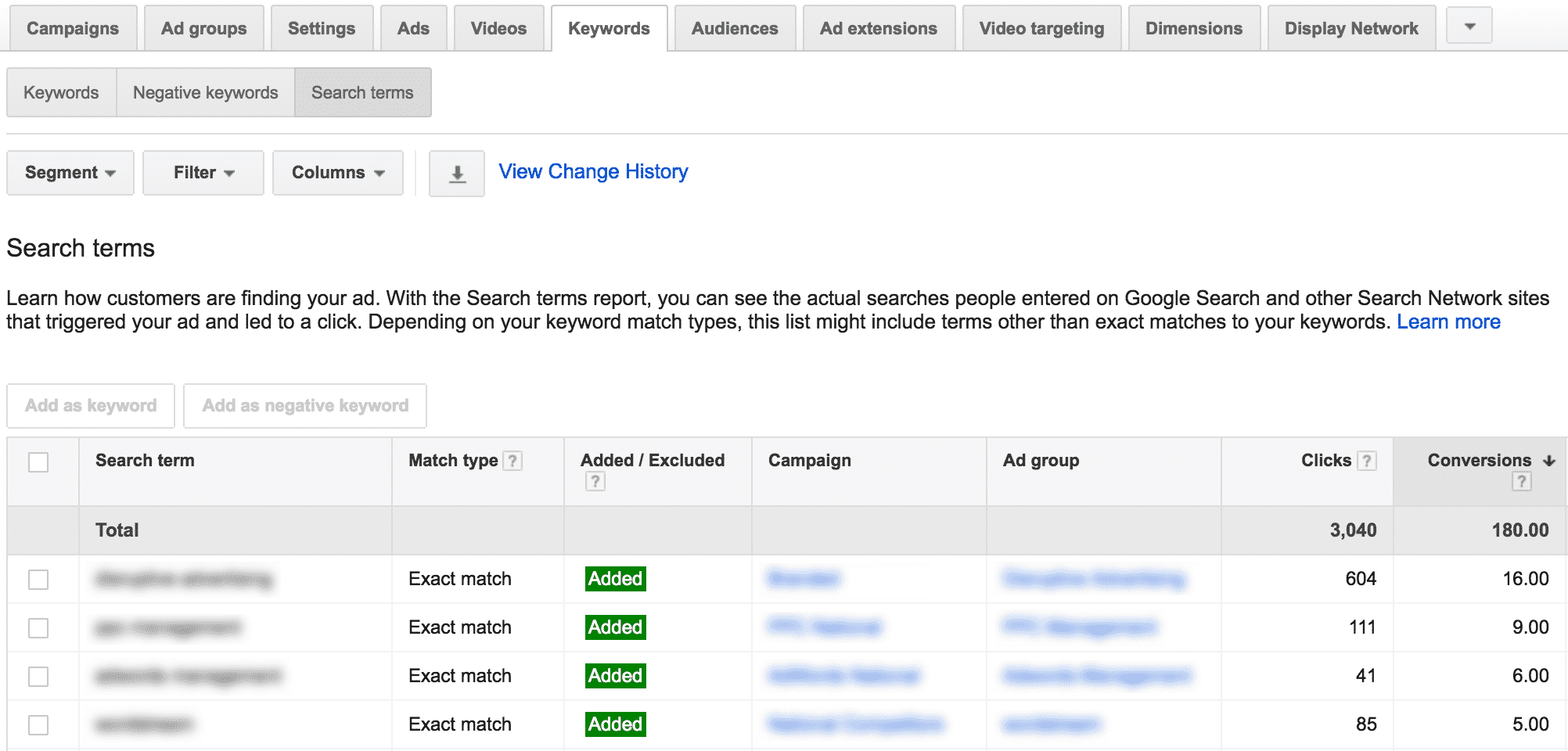
The Search Terms report shows you exactly what people typed into the search engine that led to them seeing your ad, along with how many clicks, conversions, and impressions each of your search terms got.
An effective campaign will show your ads when people search for something related to your product or service. Since they’re looking for what you have to offer when they see your ad, they’ll click your ad and end up on a smooth landing page that leads them to convert.
To see how much money your account is wasting on search terms that don’t convert, simply create a filter for “Conversions < 1,” as follows:

Scroll down to the bottom of your table and divide the cost in your “Total – all filtered search terms” row by your total cost and multiply by 100% to get the percentage of your ad spend that you are wasting on the wrong search terms.
Note, this analysis works best if you are looking at your last 2-3 months of data. That way, you get a “big picture” view of your account performance with meaningful data you can actually use.
If you’re anything like the average account in our audits, you’re wasting around 76% of your budget on searches that never convert.
Fixing Things
Now, when you saw your Search Terms report, you’ll probably thought one of two things:
1. “What the…?”
If you find yourself wondering what some of these queries have to do with your campaign or why you’re paying for that weird search term, you’ve probably just identified a real opportunity to improve the performance of your AdWords account.
As it turns out, 94% of AdWords keywords don’t produce conversions. Worse still, in the average account those useless keywords account for 72% of ad spend.
In other words, your account is blowing all of its potential on the wrong keywords.
To fix things, stop paying for your useless keywords and build some new, focused campaigns that are set up around the keywords and search terms that are actually working. Your campaigns should improve immediately, but you’ll want to check up on your Search Terms report every few weeks to ensure that your account is running right.
2. “Hmmm…”
With less blatant problems, it can be harder to see what’s going on, but the Search Terms report can still uncover a number of specific problems.
For instance, if you have relevant search terms that aren’t converting, you can probably stand toswitch up that term’s advertising strategy. You might try building more specific landing pages or ads or even just test new ad copy until something works.
If none of that works, it’s also possible that the term just isn’t as relevant as you thought.
Alternatively, you might discover search terms that don’t show up individually all that often, but share some sort of common denominator (like an irrelevant location-specific element). All together, search terms like this indicate bigger flaw within your keyword strategy that’s in need of fixing.
Whatever the results, knowing where your ad spend is wasting away give you a wealth of information that can aid in improving your campaign’s performance.
What’s an acceptable level of waste?
For our clients, we’ve found it works best to try and keep wasted ad spend below 40%. There are a couple of reasons we’ve settled on this number:
- You can never have 0% waste. No matter how optimized your account is, you’ll never be able to completely eliminate all the random searches and clicks in your campaigns.
- Tests fail. If you’re testing out new ads and keywords on a regular basis (and you should be), some of those keywords will work and some won’t. But, if you’re learning from your tests, it’s okay if you waste some money on the wrong keywords.
Can you get your wasted ad spend down into the 20-30% range? For sure, but doing so can limit your campaigns in other ways.
Going from waste to win
Now, if you’ve just discovered how wasted your AdWords account is, you’re probably wondering how long it will take for your account to “get clean.” The good news is, detoxing from a bad keyword addiction takes a lot less time than detoxing from a drug addiction.
In fact, if you’re wasting a significant portion of your AdWords budget on the wrong searches, you can see profound improvements in your account in a matter of weeks.
To illustrate this, here’s a quick GIF showing what happens as you eliminate wasted ad spend over the course of 12 weeks:
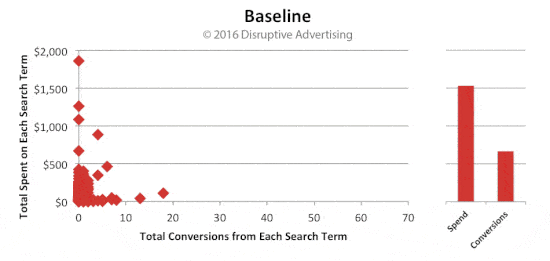
The left side of this GIF shows the total spend per search term along with total conversions per term. The right side translates this data into total ad spend and total conversions.
See what happens?
When you’re not paying for the wrong search terms, conversions go up while spend goes down. And to make things even better, the improvement isn’t linear, it’s exponential! According to our research, every 10% decrease in wasted spend leads to a 30-60% decrease in cost per conversion.
That’s every 10% decrease.
Think of it this way: If you are wasting 76% of your ad budget and you get that number down to 66%, you will see your cost per conversion go down by up to 60%. If you can drop your wasted spend down to 56%, your cost per conversion may drop another 60%.
To make things even better, this technique really doesn’t affect the quality of your conversions or your close rate. After all, you don’t have to change what’s working, you’re just getting rid of what isn’t working. While we don’t get sales data from every client, in general, our clients see their cost-per-sale drop by 25-65% using this approach.
Improve Impression Share
In paid search advertising, impression share is a measurement of how often your ads are showing up when someone types in a relevant search query. So, if your ad is in position 1.0 for every relevant search and you have an infinite budget, your ad would have a 100% impression share.
Unfortunately, that’s rarely the case.
There are a lot of reasons why your ads don’t show up when they should be showing up, but most of them stem from budget limitations. If your best keywords and ads have enough budget, they’ll show up. If funds are tight, your ads might be MIA.
To get the most out of your paid search advertising, you need to know which ads are your top performers and make sure that they’re getting every possible impression.
Identifying Your Top Performing Keywords
To figure out which keywords you should be maximizing impression share on, you need to figure out which keywords are producing the most conversions.
Getting at the Right Data
To get a feel for which keywords really drive results, we need to take a look at the Keywords report (shocker, right?).
Open your paid search account, go to the same “Keywords” tab you accessed to see your Search Terms report and set your date range for the past 3-6 months.
Next, click the Filter drop-down menu and then “Create filter” for “Conv. rate < 2%”. Here’s basically what that’ll look like:
Once you hit Apply, you’ll end up with a filtered list like this:
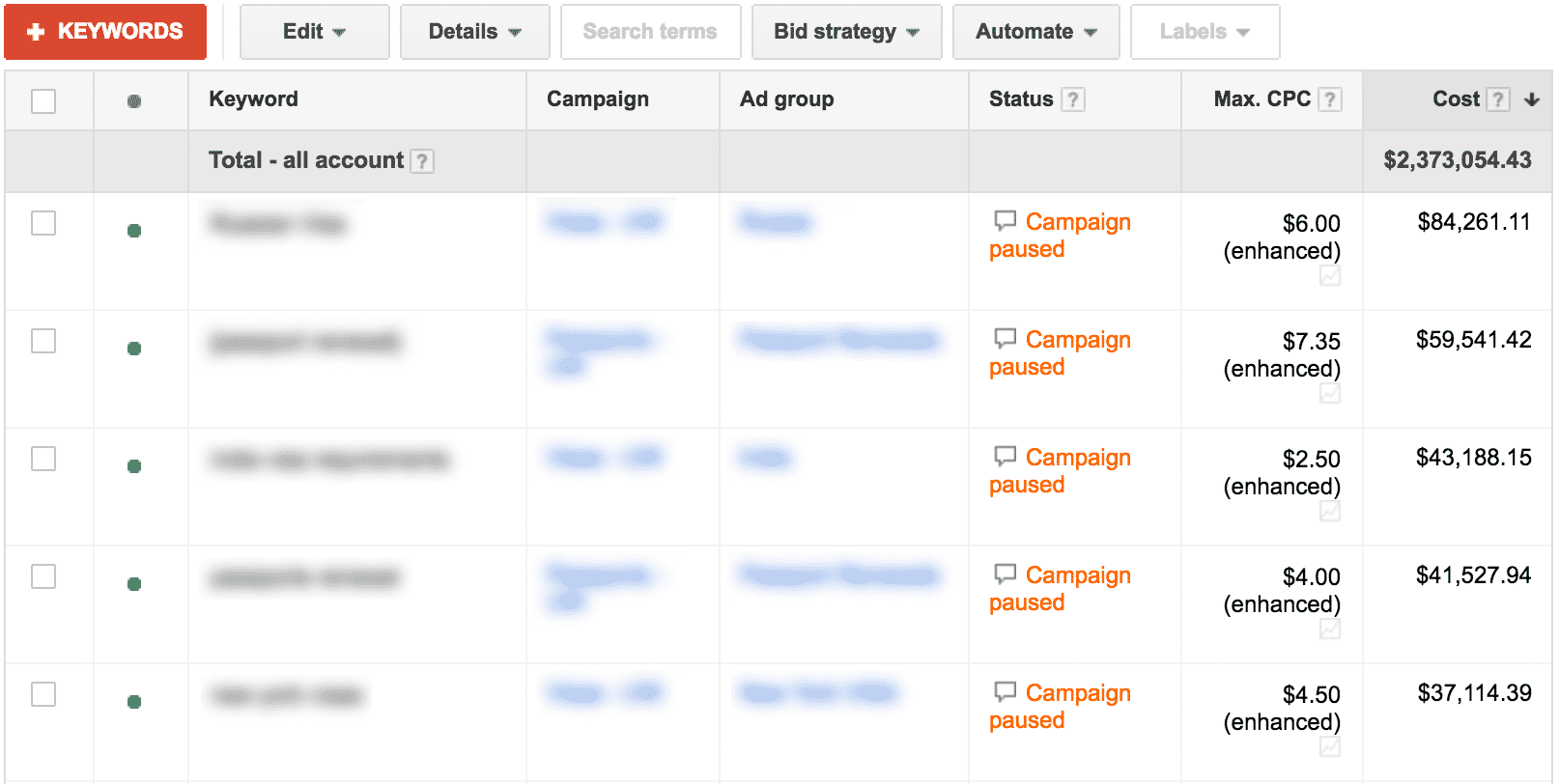
Even looking at just this screenshot, it’s clear that this account has a problem. Just 5 of their poorly-converting keywords account for 11% of their ad spend!
Looking at Impression Share
Now that you have an idea of how much money you are wasting on the wrong keywords, we need to see if that wasted budget is hurting your high-performing keywords.
To see that, let’s change our filter to “Conv. rate > 2%” (so we can look at our winners, not our losers).
Next, click on Columns > Modify columns and make sure that “Search Impr. share”, “Search Exact match IS” and “Search Lost IS” are selected:
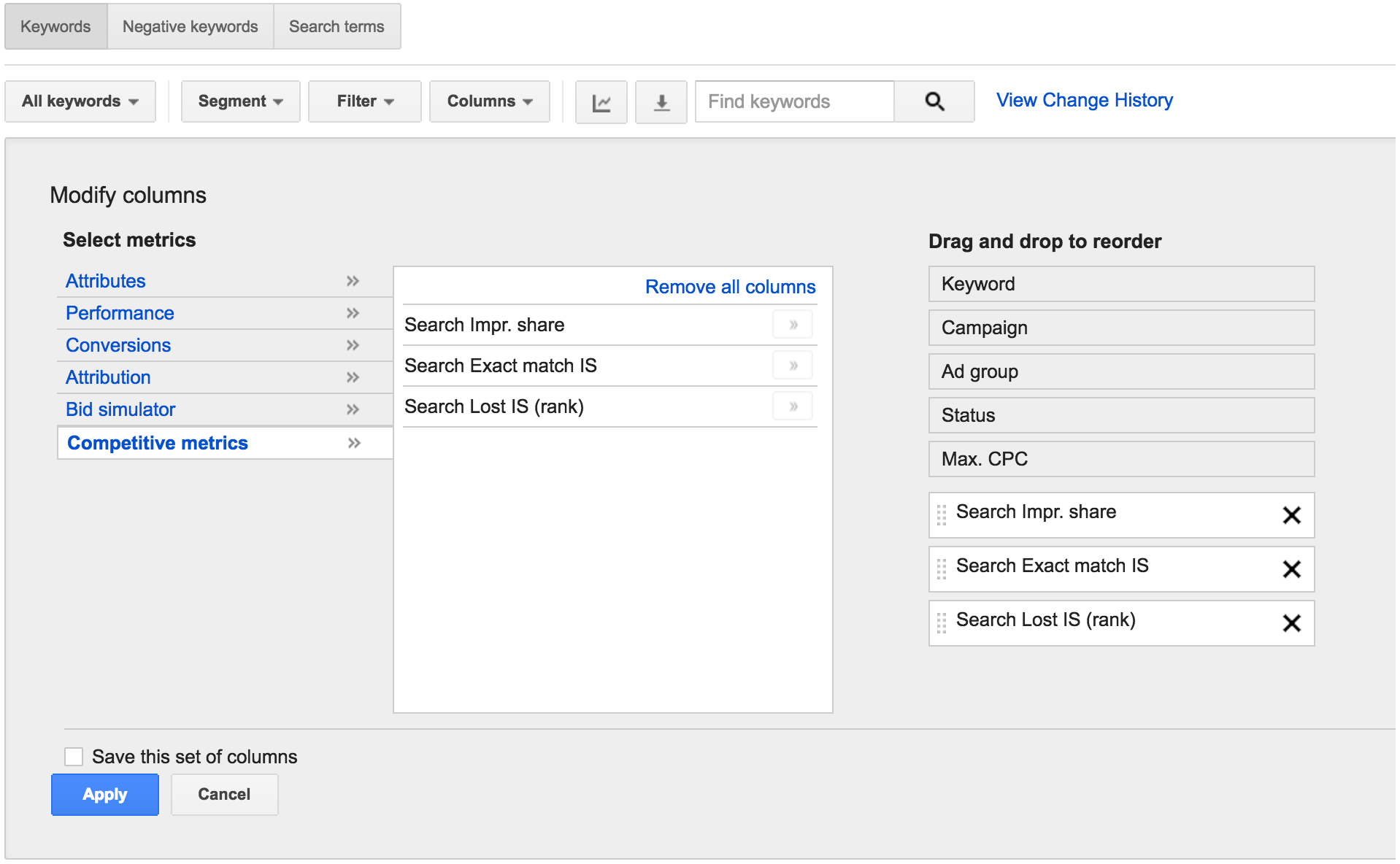
Your list should end up looking like this:
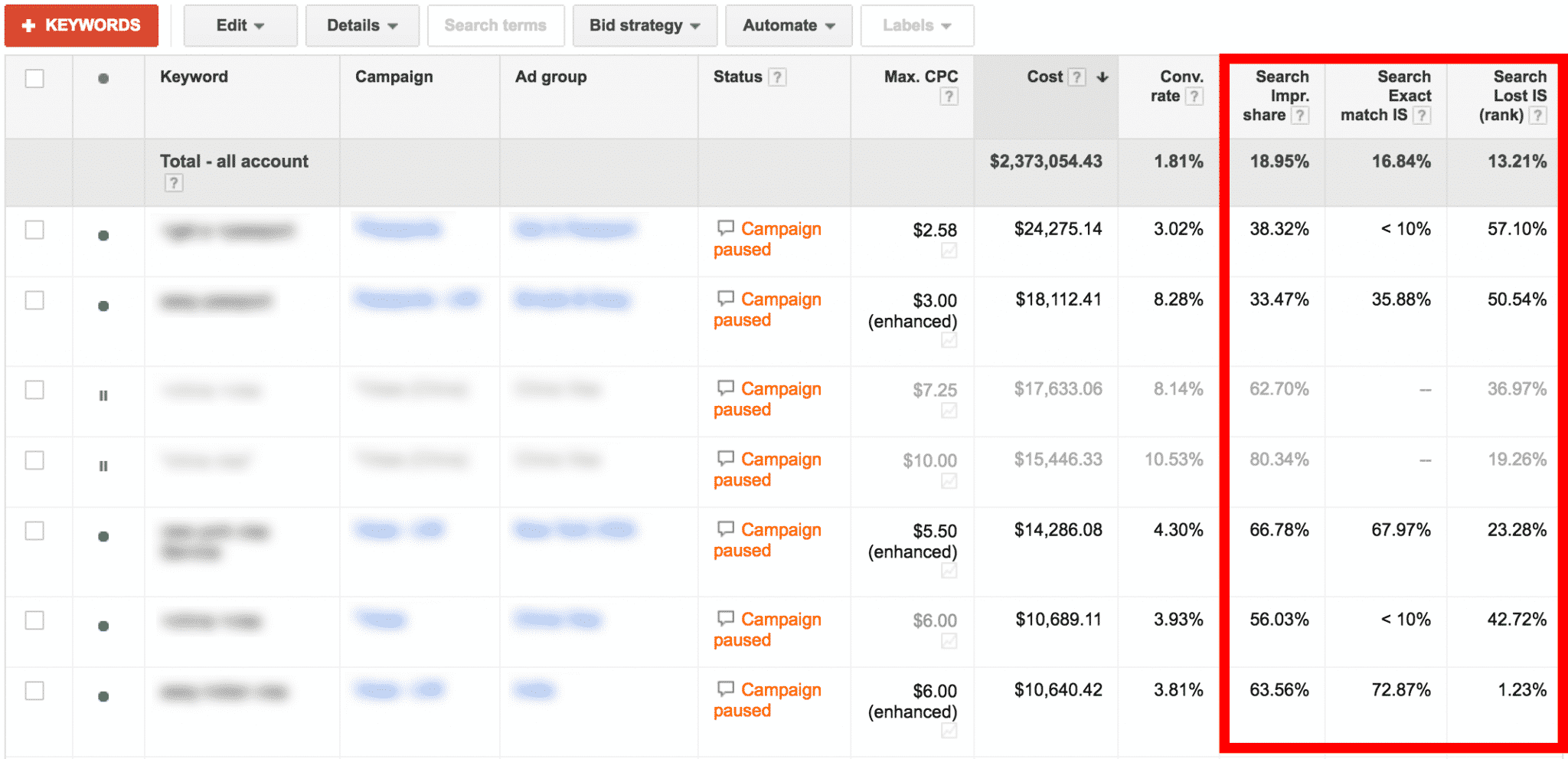
Here, we can see how all that wasted ad spend is sucking budget away from this client’s top keywords.
For example, one of these keywords has a conversion rate of 8.28%. However, this keyword is only getting one-third of the available impressions—even when someone types in that exact keyword.
The question is, why?
Search Lost IS (rank)
Looking at the Search Lost IS (rank) column, this client is losing 50.54% of their potential impressions on this high-performing keyword because their ads aren’t ranking high enough.
That means their bids are too low!
Since this keyword has one of their highest conversion rates, this is a major problem. This client is spending huge chunks of their budget on keywords that don’t convert very well, but they aren’t bidding high enough to get their best keywords seen.
In this case, upping the bids on this keyword seems like a fairly easy and obvious fix.
The one thing to take into account here is the fact that upping your bids will increase your cost-per-click (CPC), which will increase your cost-per-conversion, which will increase your cost-per-sale.
For a clear winner like this keyword, that shouldn’t be a problem, but if a keyword is barely profitable at your current CPC, increasing your CPC just to improve your impression share probably isn’t a good idea.
Of course, if your best keywords are barely profitable, you have bigger problems than just low impression share…
Search Lost IS (budget)
Here’s where things get really interesting. It takes a bit of extra effort to figure out whether or not keywords are losing impressions to budget limitations, but it’s worth it.
Since we can’t see Search Lost IS (budget) in the Keywords report, we’re going to have to look at it in the Campaigns report. Note which campaign(s) your high-performing keywords are in, go to the Campaigns tab and click on the appropriate campaign(s).
Now, add Search Lost IS (budget) as a column. This will allow you to see what percentage of your potential impressions this campaign is losing due to budget limitations.
For example, this client’s keyword with an 8.28% conversion rate was part of a campaign that was losing 77% of its impression share to budget limitations.
If the keyword is only getting 33% of the potential impressions and the campaign is only getting 23% of the potential impressions due to a lack of budget, you can bet that this keyword isn’t getting the impressions it deserves because of budget limitations.
So, this client has a high-performing keyword that is missing out on 2/3rds of its potential impressions due to bid and budget constraints…and a huge portion of this account’s budget is being spent on poor-performing keywords.
Do you see an opportunity here? I do.
Fixing Things
On a great keyword like this, you should shoot for 90% or better impression share—even if that means cutting budget from some of your lousy keywords.
After all, if the keyword is working well, shouldn’t you give it every possible chance to deliver?
Well, just in case you’re still wondering whether or not this technique actually helps your business, let me show you what happened to this client when we stopped bidding on their useless keywords and focused their budget on what was working.

The next day, the client’s ads were showing up for the right searches twice as often. Sales increased by over 50% within a month.
After 9 months, sales had more than tripled.
Best of all, the client’s account was performing so well that they actually ended up spending less on AdWords. And, all we did was give their high-performing keywords the impression share they deserved.
Unfortunately, even if you’ve optimized your keywords, if you’re spending most of your budget on your least profitable keywords, you’re missing out on some real opportunities. However, if you can refocus your budget and impressions on the most important keywords, you can often improve your results while potentially cutting your costs.
Improve Quality Score
One of the oldest, but simplest ways to reduce ad spend is to improve your quality scores.
Google Ads assigns quality scores based on how well your ads match the search intent behind your keywords. Low quality scores indicate that you need to rework the campaigns somewhere, whether that’s updating the landing page, the ad copy or the keywords. High quality scores mean that you’re on the right track.
Even more importantly, though, is how quality score will directly impact your campaigns. A high quality score will increase your ad ranking, meaning you can get more placements and better placements. It will also immediately lower your cost per click (CPC), so you’ll be getting more impressions, hopefully more clicks as a result, and then those clicks will come in at a lower cost.

Your quality score can be viewed through your campaign manager when viewing your keywords.
As long as your campaigns are focused overall, it’s often relatively easy to improve your quality score with a few changes to your campaign once you assess what’s causing your score to take the biggest hit. If you need to improve your quality score (and who would say no to that, even if they’re already doing well?) you can try the following techniques to give it a boost.
Create Tighter Keyword Groups
If your keyword groups are all over the place for a single ad campaign, there’s a very good chance that your ad and search term relevance isn’t going to be great. In addition to producing a lot of meaningless clicks—as mentioned above—this can also reduce your quality score.
Here’s a quick good example. I search for “life coach,” and only half the ads are for life coaches—the other half are for certification. If I’m someone searching for a life coach, I almost definitely won’t be someone looking to get certified. The search intent and the ads don’t match up.
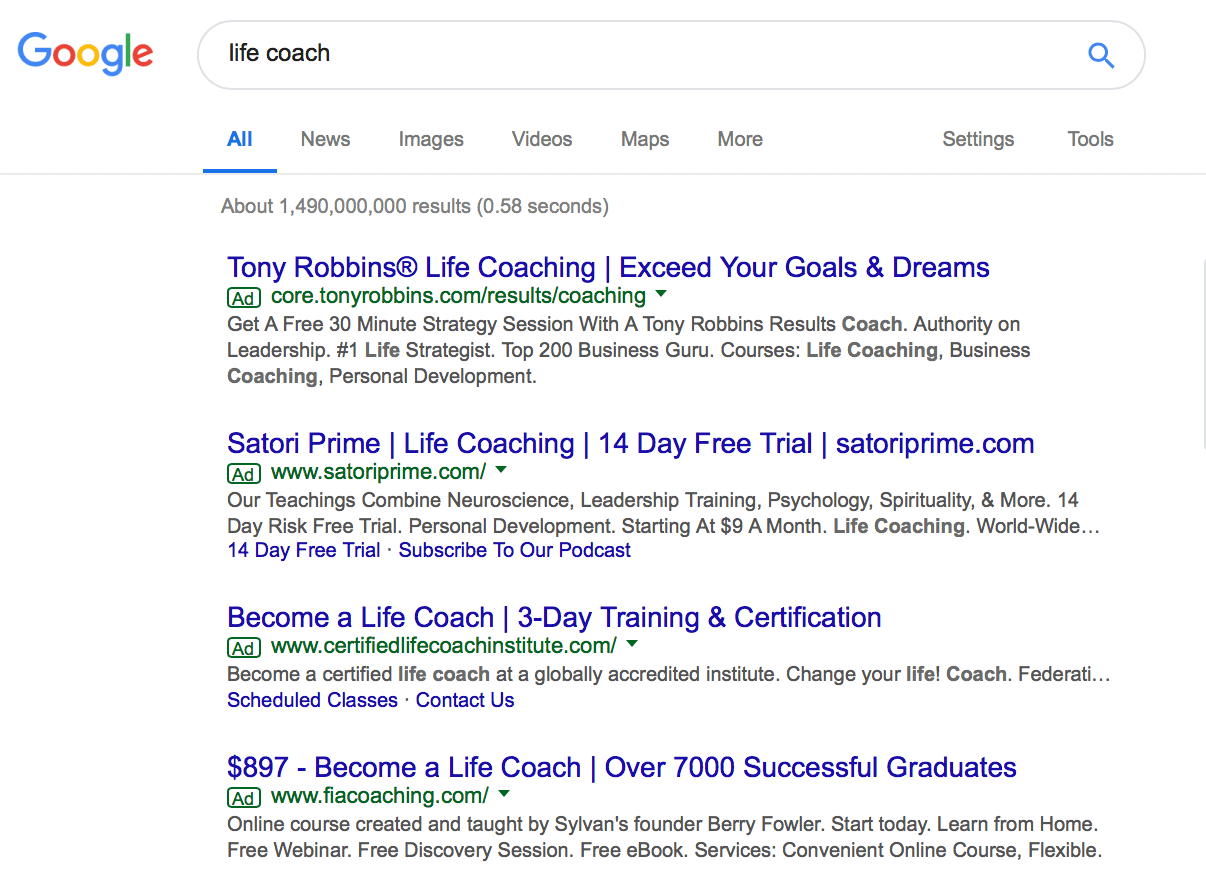
Create hyper-targeted Google Ads campaigns with tighter, smaller ad groups. Choose keywords that will work well with specific, specialized ad copy if possible. Use negative keywords to eliminate the likelihood that you’ll appear in irrelevant searches (think “life coach certification”). This will help you increase your CTR and ad relevance to keywords and search terms significantly.
Check that Landing Page
Landing pages are a big source of low quality scores, because too many advertisers forget that Google evaluates them carefully when assessing your ad campaign (Facebook does, too, for what it’s worth, and may actually reject your ad campaigns if the landing page doesn’t match the ad).
When creating your ad campaign, ensure that your landing pages check off the following boxes for each individual campaign they’re getting traffic from:
- Easy navigation. Is it easy for site visitors to see where to go for more information, what CTAs to take, or what forms to fill out? Everything should be straight forward.
- Directly related to the ad that sent visitors there. It doesn’t matter if you have one landing page for six ads—that landing page needs to match up to each individual ad campaign. If it doesn’t, you need to change the ads or create more landing pages. Make sure that the offers, products, and services mentioned in your ad are clearly listed on the landing page you’re sending potential customers to. Not only will it make Google happy, it will make customers happy, too, and increase your conversions.
- Crawlable. I’ve found that a lot of businesses neglect the technical side of their landing pages, treating them as if they’re just a pit stop on the way to the real deal of the main site. This is a mistake, because if Google can’t successfully crawl your landing page, it won’t be able to detect relevance, which could impact your quality score.
- Fast loading speed. Loading speed matters. I’ll say it again and again until people believe me. If your landing page is slow to load, it will impact your organic SEO and your quality score for your campaigns. Make those changes to get your site loading speed up to snuff.
- Links to your other business pages. Some landing pages will be a part of your website, while others will seem to stand apart from it. In these cases, you can’t just send people to a single landing page with no way to learn more about your business. Include links to and information about your main business, even if the landing page doesn’t share the same navigational bars as the rest of your site.
This ad did everything right:

They highlight certain features in their ad (including free, drag-and-drop, and easy) and mention that on the landing page, which includes a clickable CTA, links to a privacy policy (located at the bottom of the page), and a link to the main company site.
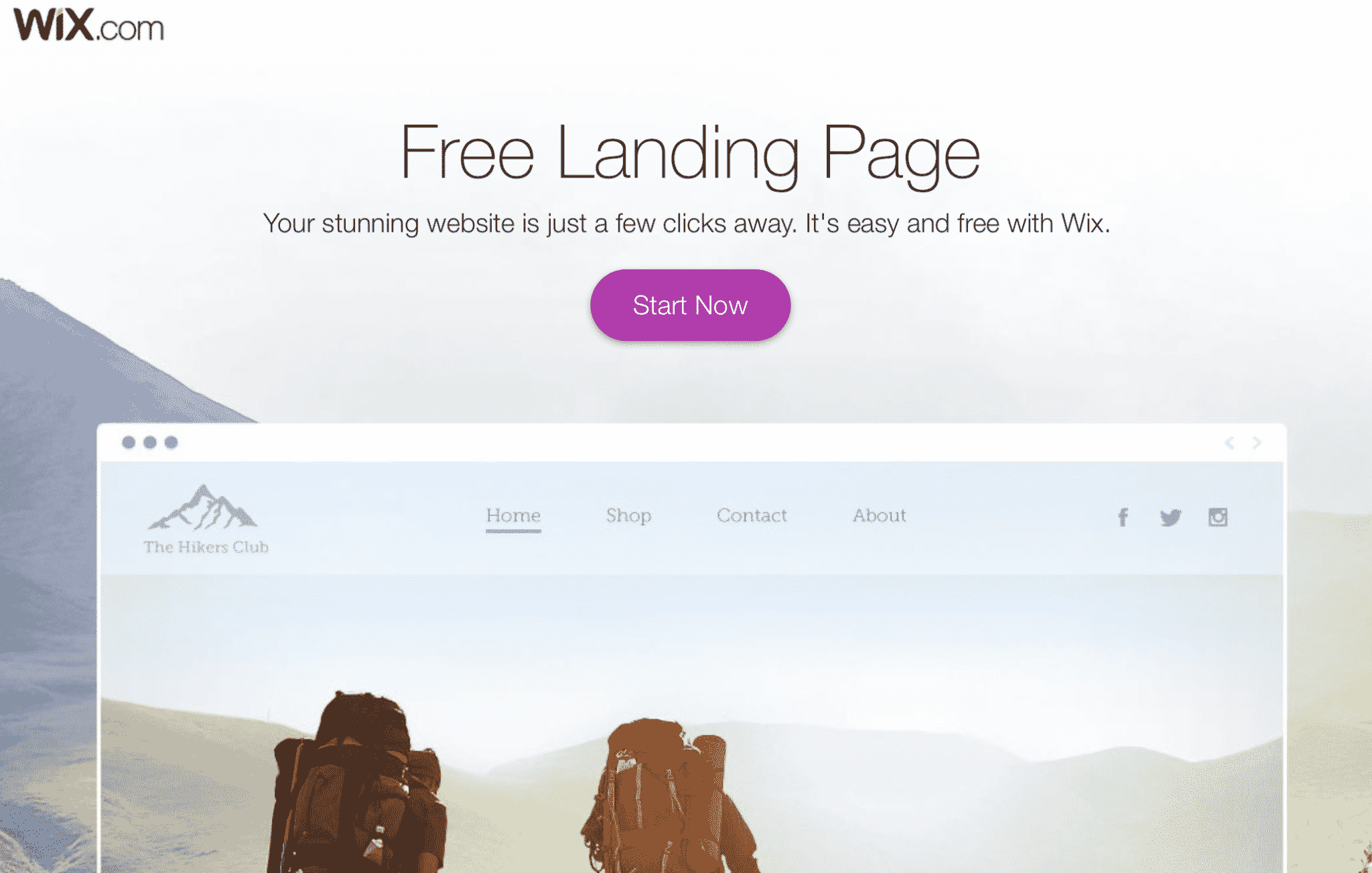
Watch Out for Broad Match Types
Broad match keywords can be a death trap for ad campaigns unless you’re making heavy use of negative keywords. Essentially, the broad match keyword type allows you to try to show up for as many maybe-relevant keyword searches as possible.
While this can significantly increase your reach and impressions, it comes with a cost.
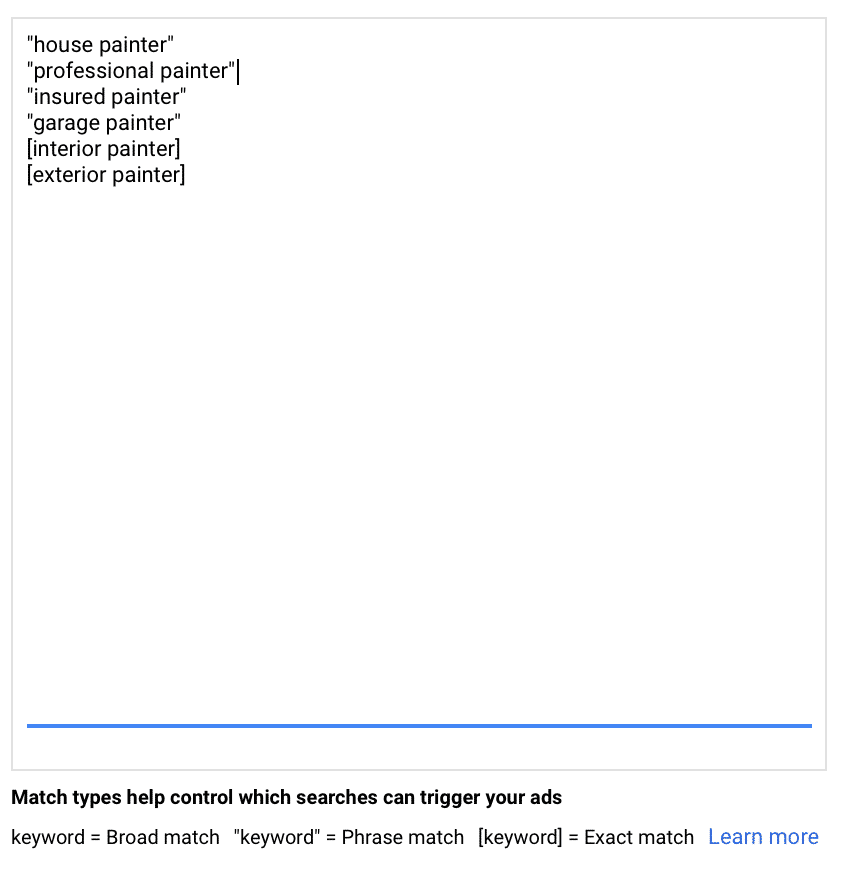
Let’s say that you’re advertising your home painting services. You choose the keyword “painter.” While you’ll show up in searches for “house painter” and “interior painter” and “garage painter,” you could also easily end up in searches for “painting class” or “classical painter” or “cabinet painting.” As you end up in more irrelevant searches, your CTR goes down alongside your ad relevance and your quality score may be low.
Consider using exact match or phrase match keywords instead, and use plenty of those negative keywords to keep things on track.
Keep Mobile in Mind
If you have a low quality score on mobile, it could affect your mobile performance significantly, and with so much online traffic happening on those small phone screens, this isn’t something you want to happen.
You can increase your CTR on mobile ads by choosing mobile-friendly ad extensions, too. Adding a call extension, for example, makes it particularly easy for an interested client to get in touch with you on mobile: two clicks of a button and your phone will be ringing. Since boosted CTR means a better ad score, this will help you.
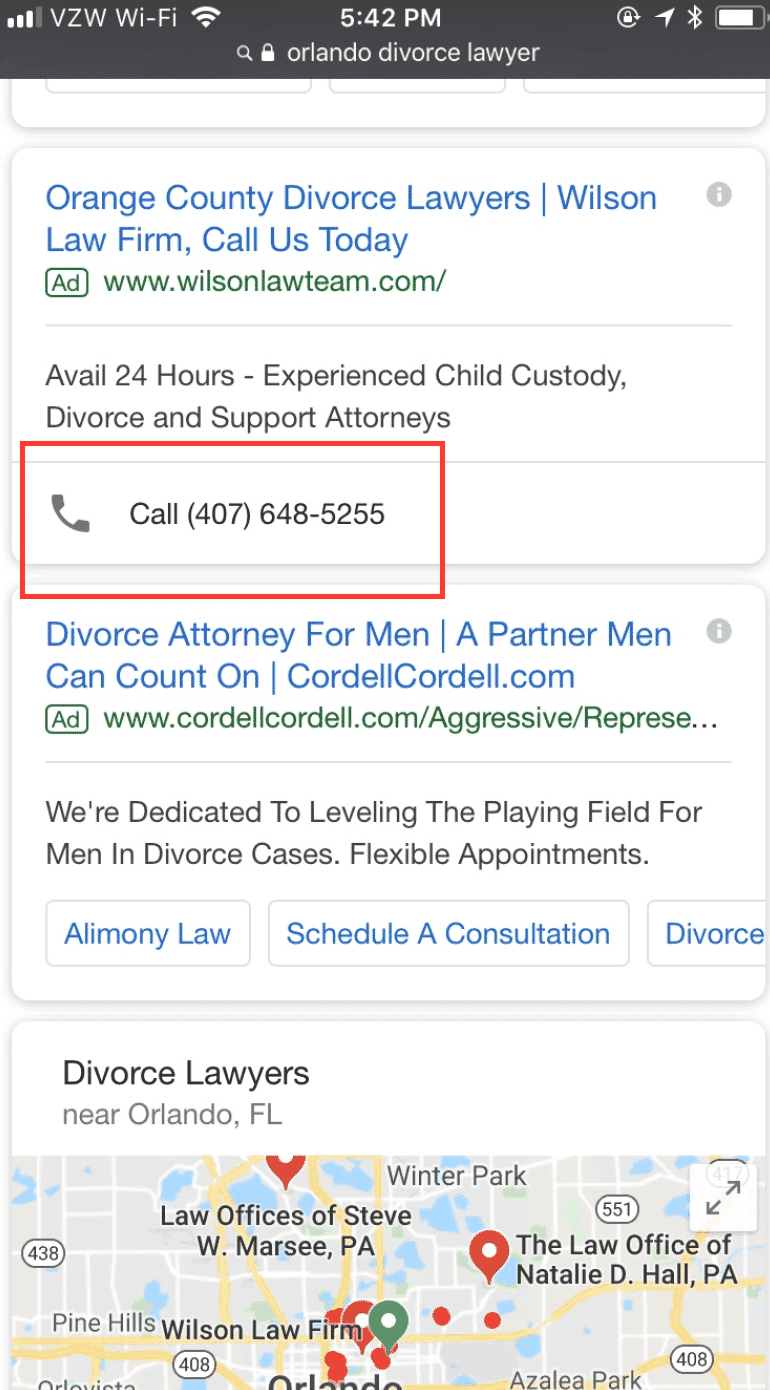
One of the biggest factors that have been affecting otherwise strong campaigns is mobile site loading speed. A lot of advertisers forget to monitor this in addition to regular site loading speed. Earlier this year, it was confirmed that mobile loading speed would directly impact quality score, so adjusting that landing page is a quick fix that could give you a big bump in results.
To be on the safe side, check out your site’s mobile loading speed with Google here. It only takes a minute to scan and it’s free.
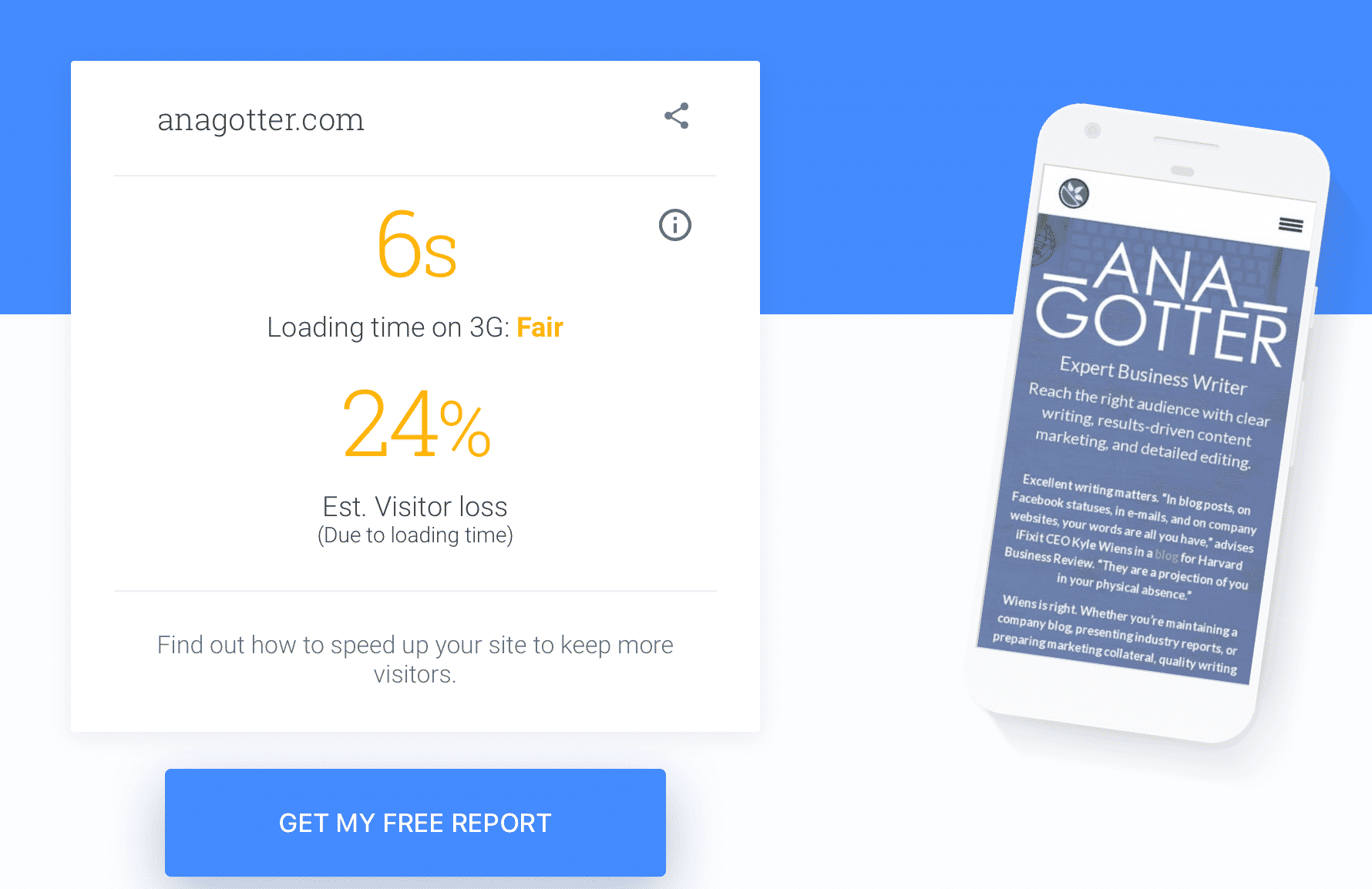
Test Out Ad Extensions
While it is a myth that ad extensions are directly tied to quality score, there is a correlation.
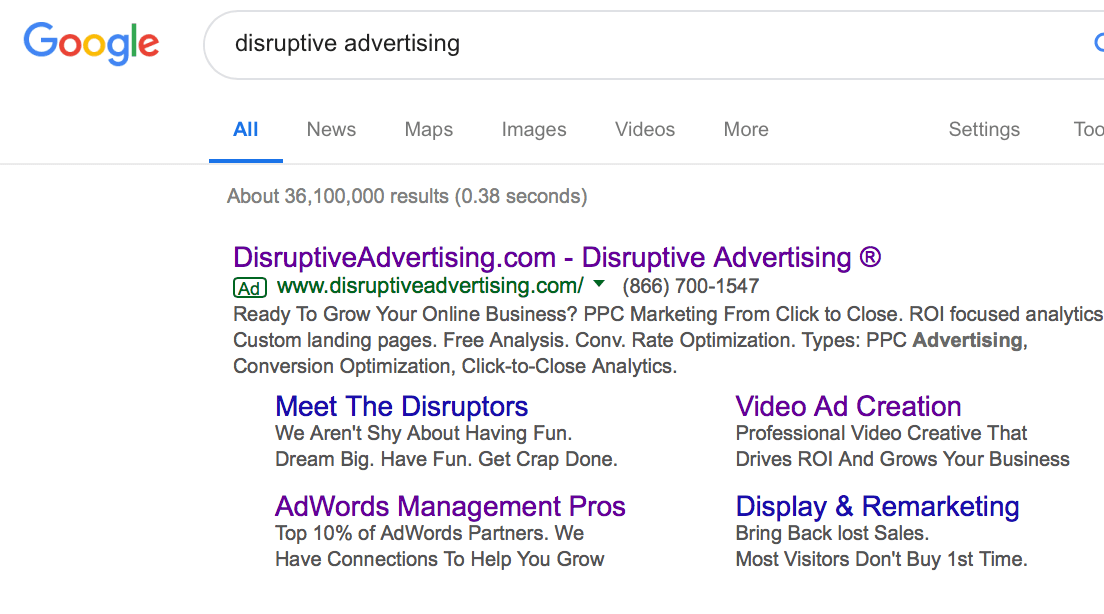
Ad extensions, after all, provide users with more information about your brand or your site while taking up more real estate in a way that naturally draws user attention in. Therefore, extensions will often increase click-through rate. That boost in CTR is what increases quality score, not the fact that you’re simply using the extensions.
Use Dynamic Keyword Insertion
Dynamic keyword insertion allows you to create ad campaigns that swap out certain phrases in the headlines or descriptions with the keyword that the user searched for, as long as it’s in your list of targeted keywords.
Instead of saying “home decor sale,” for example, dynamic keyword insertion could swap out “home decor” with “throw pillows,” “wall clocks,” and “paintings.” When users see the ad, they’ll see a campaign that’s advertising exactly what they’re searching for, but you get to manage one campaign instead of 16 individual ones.
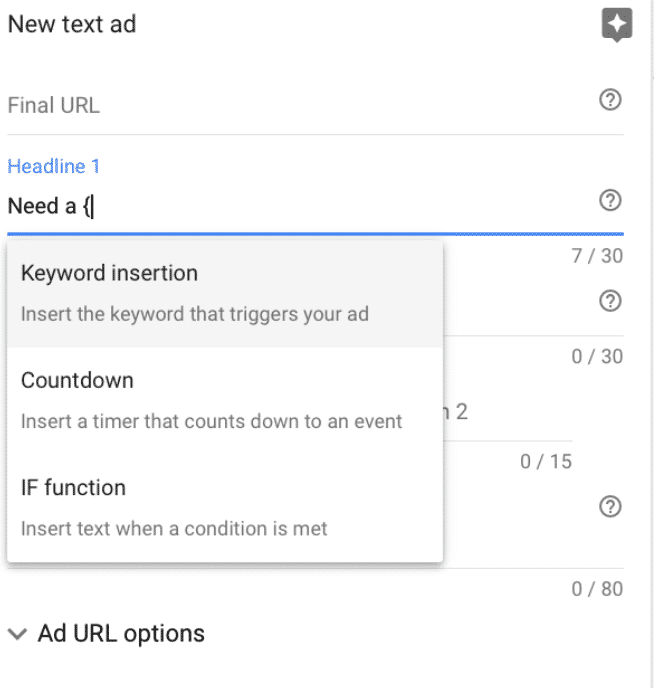
It goes without saying that dynamic keyword insertion greatly increases the relevance of your ad campaigns to the searcher, which will boost CTR, too. You can learn more about how to implement dynamic keyword insertion here.
Improve Message Match
We alluded to this above, but if your advertising messaging doesn’t match up with the messaging of your landing page, you’ll end up spending a lot of money on clicks that won’t convert.
To show you how this works in a real-world setting, let’s go through an imaginary scenario. Say you’re driving on the freeway one morning and you see a billboard on the side of the road advertising “The Best Pancakes in the World!” at Joey’s Diner.

The thought of pancakes reminds you of how hungry you are and how long it’s been since you had a good pancake, so you get on the off-ramp, pull up to the restaurant and excitedly open the front door.
To your surprise, your nose is immediately overpowered by the smell of onion rings. Onion rings? You frantically scan the menu, but, there’s no mention of pancakes there, either. Depressed, you shuffle back outside, still thinking about warm maple syrup on freshly cooked flapjacks.
Joey’s Diner did a great job with their ad. It caught your interest and got you to the restaurant. However, their content was dead wrong. Maybe they only sell pancakes from 8-10 in the morning and you arrived at 10:30. Maybe pancakes was an old promotion.
The reason why the ad didn’t match reality doesn’t matter. You were promised pancakes and given onion rings. That’s not a great way to win customers.
For PPC campaigns, message match applies to everything from the header and subheader of your page to the all-important call-to-action (CTA). Basically, your landing page should reaffirm to the potential customer that, “Yes, this is page you were looking for.”
In order to avoid being the next Joey’s Diner, you have to be cautious and detail-oriented about how you set up your ads and landing pages.
The Good, the Bad and the Ugly
Now let’s go over some examples of message match examine the effect message match has on the effectiveness of landing pages.
In this situation, the user is being retargeted for adopting a pug by “Pets 4 Days.”
The Good

This is a great image ad-landing page combo. Right away you can see that the headline, subhead, CTA and hero shot of the image ad match 100% to the landing page. It’s also important to note that the branding lines up with that on the ad as well.
As soon as someone clicks on the ad, they immediately know that they’ve come to the right place. That’s a win!
The Bad

Okay, here’s where the lines start to get a little blurry. Upon first inspection, this seems visually right—the hero shot is consistent between the ad and the landing page. The same goes for the branding elements.
Things get hairy when you look at the copy, though. For example, the headline and subhead are not targeted towards pug adoption but to dogs and cats. Huh? I thought I was clicking on a pug ad!
Then, to make matters worse, the CTA goes back to encouraging viewers to “Get a Pug Now.” Now I’m all sorts of confused. What exactly do they want me to do here?
With a few tweaks, this landing page could work for a more general ad, but for a pug-specific ad, it definitely needs work. This is a great example of the confusion that can arise when new ads are not created for updated campaigns.
The Ugly

This one is truly horrible. I clicked on a blue ad for pugs and ended up on a red page for cats?
To make matters worse, the headline, subhead and CTA do not match at all. The only way this could be more confusing would be if the page was advocating euthanasia!
The moral of the story? The better your ads match your landing pages (both in terms of messaging and design), the more likely people are to feel comfortable and confident on your site…and the more likely they are to become a lead or a customer.
Conclusion
If you’re looking for ways to decrease ad spend without decreasing your results, these tips should get you going on the right path. That being said, in our experience, most people who are looking to cut ad spend are frustrated because they aren’t getting great results from their ad spend.
After all, if you are getting great results from your ad spend, why cut back?
The good news is, if this sounds like you, applying the tactics outlined in this article should help get your campaigns into a more profitable place. At that point, you can decide whether or not you actually want to cut back or just keep making more money from your existing ad spend.
By the way, if you’d like us to help you improve the performance of your paid search campaigns, let me know here or in the comments. We’d love to help!
Are there any tactics for reducing ad spend that you’d add to this article? Leave your thoughts in the comments.






